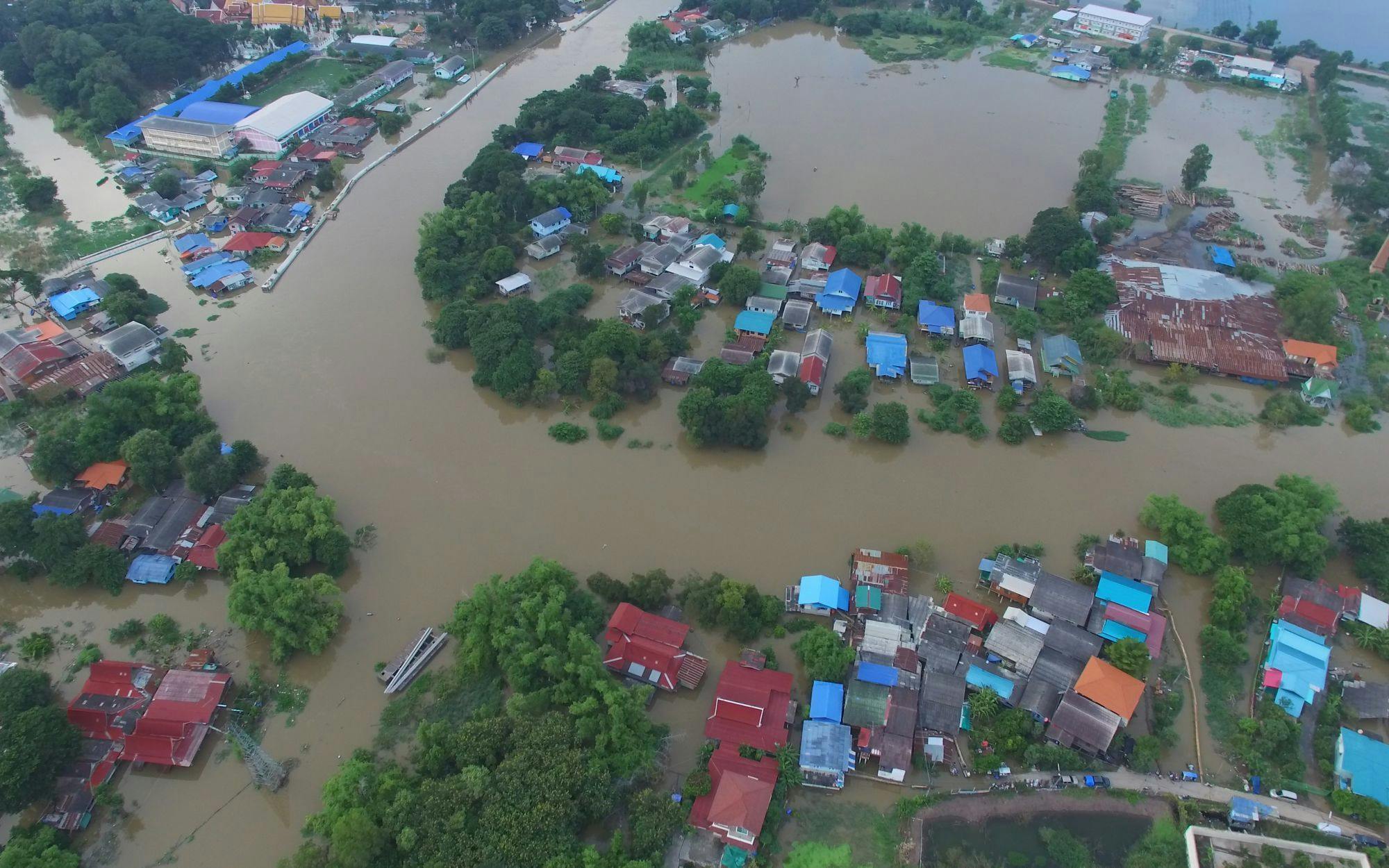
Natural Disasters’ Impact on Construction in the United States
In these times of easy and instant access to news from around the globe, the effects of major earthquakes in Indonesia and Mexico, cyclones in Southeast Asia, Tsunamis around the world, volcanoes in Europe in unexpected places and, of course, raging forest fires and hurricanes in the United States are frequently in the news. Accompanying each of these disasters are immediate threats to construction projects, both physical and those affecting the safety and health of personnel.
However, after the dust settles or the waters recede, myriad issues will become obstacles to the road to recovery for a contractor to navigate. In 2020 alone, the volume of strong storms and forest fires have focused so much attention on the impact of disasters. The purpose of this article is to provide guidelines in anticipation of disasters, for reviewing the impact of a disaster as it is happening, and developing a mitigation plan to limit losses.
Anticipating Disasters
The best time to prepare for a disaster on a project is before the project starts. Reviewing contract rights, insurance policies and company disaster response protocols while a category 3 hurricane is a day away is not a best practice. To avoid falling into that situation, a contractor should follow the following guidelines. Doing so facilitates proper action during the actual disaster itself and in the aftermath.
- Evaluate and identify likely disasters that could affect each project based upon location and other factors. Projects in Louisiana and Mississippi should anticipate hurricanes. Projects in California should anticipate forest fires.
- Prepare a crisis management plan for each such disaster that provides for:
- clear designation of a management control team with responsibilities allocated;
- a contingency communication plan to assure that the management control team has the means to communicate even while power and internet may not be available;
- advice to subcontractors of what is required of them in the event of the disaster;
- a plan to liaise with appropriate government agencies (e.g. fire department) with names and numbers to be called;
- identification of issues related to safety of all personnel as well as protocols for keeping employees informed;
- identification of what is necessary to maintain safety of the site;
- plans for stabilization of work-in-place, cranes, equipment and other elements of a project likely to be affected by the disaster;
- a plan to deal with the loss of power over an extended period and provide for generating power for safety and protection of work and equipment;
- a plan for the provision of contractually required notices to owner;
- protocols for communication with insurance brokers; and
- protocols for communication with company attorneys.
Regrouping After The Disaster
Whether or not handling the disaster was anticipated and well planned by the contractor, following every disaster there is the need to regroup. The contractor may return to a project destroyed by water or fire or, if fortunate, may return to a project that will be back to some level of “normal” after cleanup operations.
Following the disaster event, a contractor should follow these guidelines:
- Determine if hazardous conditions require remediation prior to returning to work. Notify owner of all such conditions.
- If hazardous conditions include environmentally sensitive issues, such as the release of contaminants into water or soil, evaluate the relevant regulatory issues and contractual obligations. This evaluation should be conducted with legal counsel as part of the process discussed in item 4 below.
- Evaluate the order of resumption of work and develop a work plan in combination with consideration of worker and site safety.
- Liaise with legal counsel to evaluate options to respond to delays and additional costs and to provide owner with contractually required notices. The issues to be considered should include:
- whether the contract has a force majeure clause or similar language, including any language addressing time extension and compensation rights; and
- determination of contractual notice requirements and ensuring notices meet those requirements regarding content, form of delivery and parties and individuals designated to receive notices.
- Liaise with insurance brokers and adjusters to evaluate the extent of losses and to obtain the earliest possible financial relief pursuant to the policies. The issues to be considered should include:
- Identification of the policies in effect. Consider Builder’s Risk, General Liability, Professional Liability and/or Pollution Liability policies and evaluate available coverage.
- Send required notices to the company’s carriers and request that the owner put all its applicable insurers on notice. Request copies of those notices. Likewise, notify subcontractors to notify their carriers and request copies of those notices.
- Enlist company risk managers and insurance professionals to assist with notices.
- Liaise with the owner’s representative to identify the owner’s preferences and directions. For example, depending upon the nature of the disaster and the resulting damage, an owner may decide to suspend the project. Once those preferences or directions are understood, confirm them in writing pursuant to the notice requirements of the contract. Evaluate with legal counsel the legal implications of the owner’s plans.
- Calendar deadlines to send initial notice and follow-up notices.
- Consider impacts that are long-term or may impact the project such as shortage of labor, material, equipment and/or fuel. Notify the owner in writing of such considerations and their impact upon the project.
- When there is sufficient information, but at the earliest reasonable time, perform an analysis of the impact of the disaster on time and cost and determine the contract’s requirements for documentation necessary for a claim for additional time or costs. The analysis should include:
- Review of the project CPM schedule as of the storm/event, and prior to analysis and assure that it reflects current status and logic. This is the time to correct any errors of the policies in effect.
- Add the storm/event and cleanup activities, tie them to successor activities and estimate delays.
- Include a disclaimer that the time impact analysis is subject to revisions as the delay continues or when there is more information to gauge the extent of the delay. Update the time impact analysis periodically.
- Document and Mitigate Losses. This should include the following actions:
- Take time-stamped photographs and videos of the damage. Include the initial state of the loss and the area surrounding the site. Separate damaged property from undamaged property. Do not discard property until losses are confirmed by insurance adjusters and others involved.
- Record and document all categories of damages. For example:
- expenses to expedite repairs including overtime wages or express transportation charges;
- increased costs due to delays;
- increased staff time (often overlooked) in response to the project’s post-disaster needs;
- expenses for enforcement of laws or ordinances regulating repairs;
- costs to demolish or rebuild;
- expenses for debris removal, remediation and hazardous material; and
- costs to preserve property, including trees, shrubs and plants.
- Document areas that are not damaged, on the site and neighboring properties.
- Separately track disaster-related invoices, change orders, work tickets, proposals, quotes and/or changes in subcontractor staffing.
Future Projects For Rebuilding
A natural disaster dramatically alters the rebuilding landscape and new opportunities for projects will arise. However, accompanying these opportunities are many challenges that require special consideration:
- Evaluate the Proposed Project.
- Critically determine the project risks and tailor the contract accordingly. Risks should be allocated to the party that can handle them. Allocation to a party ill-equipped or not adequately experienced in the scope of that risk is not an appropriate way to resolve the risk.
- Define the scope of work and allocate responsibility between the Owner and contractor
- Factor in Health and Safety Concerns.
- Evaluate risk management protocols and develop contract language to limit exposure for the management of hazardous materials/conditions. Consult with insurance agent to ensure adequate coverage.
- Request that the owner engage industrial hygienists to evaluate site conditions prior to mobilization.
- Check local state requirements for health and safety issues including mold-evaluation and remediation services. Licensed professionals may be in short supply; plan and price accordingly.
- Consider the Form of Payment.
- Avoid contingent payment clause contracts. If payment is contingent upon the owner receiving funding from third parties (insurance companies or FEMA), such payments could be delayed or illusory.
- Consider contract terms for payment based on a time and material basis or stated unit rates. Specifically define costs for materials and staffing.
- Carefully assess whether the potential client has the ability to fund payment, including requesting the owner to identify the source of project financing. This information may be required by law and should be required by the contract.
- Determine Applicable Local Laws:
- Depending upon the state in which the project is located, the scope of work on a post-disaster project may include elements that require licenses. For example, in Louisiana, contractors must hold a Mold Remediation license with the State Licensing Board for Contractors in order to perform remediation. In Texas, mold remediation must be performed in strict compliance with the requirements of the Texas Department of Licensing and Regulation.
- Identify if state or local law includes regulation of construction projects to curb the prevalence of contractor and remediation fraud. Evaluate those regulations with legal counsel and management to assure compliance.
As the number and severity of natural disasters has increased in the United States, and given the unusual number of them in 2020, the importance of considering the potential of one affecting a project is obvious. The guidelines in this article, from pre-planning to post-recovery, hopefully set out a useful and practical framework to optimize a contractor’s success in the face of a natural disaster.
Related stories








